Journalist Mark Whitaker (IG@marktwhitaker) visited the Schomburg Center for Research in Black Culture in Harlem on Tuesday, May 20th celebrating his new book “Malcolm X 100: The Afterlife of Malcolm X: An Outcast Turned Icon’s Enduring Impact on America.” This year marks the 100th birthday of the civil rights leader. Thousands of Harlemities are celebrating Malcolm X’s birthday, which is on May 19th, all year long with many events remembering his posthumous legacy to the Black community.
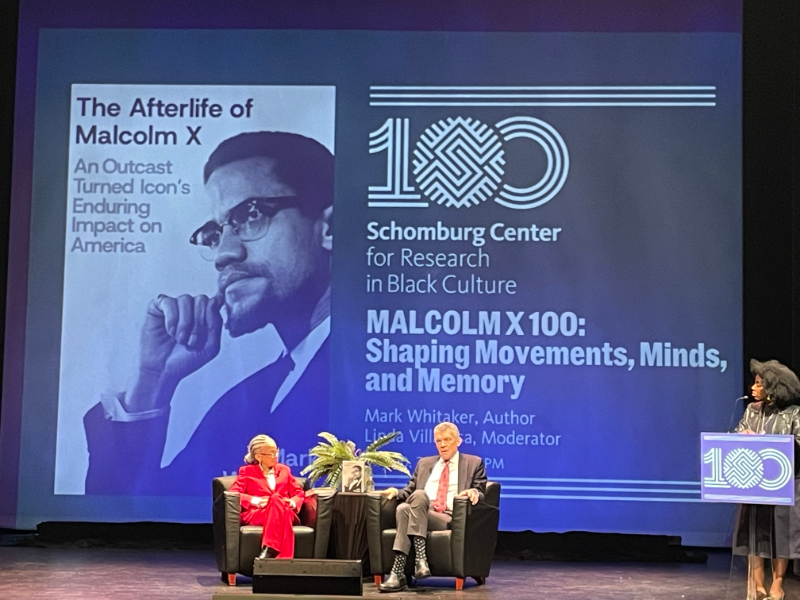
The Schomburg Center located on Malcolm X Boulevard and West 135th Street, across from Harlem Hospital, hosted Malcolm X 100: Shaping Movements, Minds, and Memory with Mark Whitaker book conversation, Q&A, and book signing. The moderator is Journalist and Contributing Writer Linda Vilarosa (IG@linda_villarosa) of the New York Times Magazine and former Executive Editor of Essence Magazine.
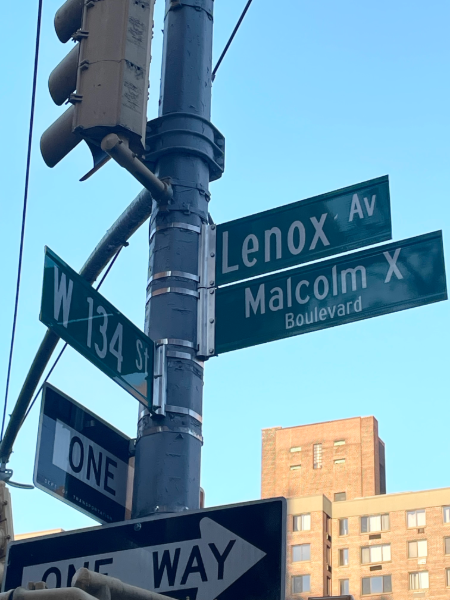
The book lecture began with Vilarosa asking what was his inspiration and how he chose to write about Malcolm X and the afterlife. “I was aware of the autobiography when I read that as a teenager if it was a question of writing another biography on Malcolm X, I thought I couldn’t add anything. My last book, which I started in 2018, was about the birth of black power in 1966, and I was struck by how omnipresent he was because he was assassinated in 1965. I felt his presence and absence.” said Whitaker. “ I started thinking on another book not on Malcom’s life, but on his influence since his assassination,” he said.
Malcolm X 100 sheds light on the events after Malcolm’s assassination which include exploring the two men wrongfully convicted for 42 years of Malcolm’s murder. In 2021, these two men were exonerated by New York District Attorney Cyrus Vance Jr. Whitaker wrote about Malcom’s influence in political hip-hop with KRS-One, Public Enemy, and 2Pac.
“I knew his influence on Black power and the Blacks Arts Movement. I did a cover on the 1992 Spike Lee movie for Newsweek” said Whitaker. He discussed his biggest surprise when writing the book.
“When researching and reporting the chapter on Malcolm’s influence on hip-hop was both fascinating and an education for me and I am a much bigger fan,” he said.
”I am a jazz guy, and not super knowledgeable on hip-hop, but I discovered that a whole new generation had discovered Malcolm in the 80s and ’90s through hip-hop and the Spike Lee movie.”
Vilarosa next discussed with Whitaker the things she found surprising in the book. “I was surprised at how tightly Malcolm controlled his media image,” she said “He had some New York Times reporters on speed dial,”
“Malcolm had his favorite reporters, like Louis Lomax, in the Black press. Malcolm was electric, even in black and white. He would talk to anyone and any radio programs, especially on college campuses. He also developed a relationship with a half dozen White reporters, especially at The New York Times, such as Mike “M.S.” Handler, a foreign correspondent for The New York Times, and an early Mike Wallace. When Malcolm separated from the Nation of Islam, it was Mike that he went to. There were other White reporters mentioned in the book like Peter Goldman for Newsweek Magazine, and his wife Helen Dudar, feature writer for The New York Post.” he said.
The book discussed the biggest mystery, Who killed Malcolm X? “With all his reporter contacts, he would reach out for press conferences and expose the leader of the Nation of Islam, Elijah Muhammad, and his adultery. He would work these reporters. He goes to Mike Wallace and does a TV interview on Muhammad. Wallace asked Malcolm, Are you worried about what’s going to happen to you? He smiled and said, I am already a dead man.” said Whitaker.
Vilrosa next discussed her favorite chapters in the book. “My first one was making the Malcolm X Spike Lee movie. James Baldwin is the writer of the screenplay. There were numerous considerations for the role of Malcolm like Billy D. Williams, Sidney Poitier and James Earl Jones, and insanely, Charlton Heston in Black Face.” she said.
Whitaker explains how Spike Lee was chosen for the project and the role was given to Academy-Award Winning Actor Denzel Washington “There was a white director named Marvin Worth, who knew Malcolm when he was a street hustler in Harlem, before he went to prison. Worth thought the Autobiography of Malcolm X, by Alex Haley, published in 1965, would make a great movie. He got the rights to the movie in 1967. He approached Baldwin and took a stab at writing the screenplay. He wrote a draft while being in L.A. The project went into limbo for decades.” he said.
He continued explaining how it came to Bladwin’s draft became the foundation of the Oscar-nominated movie. “The movie was taken over by Worth and got a deal with Warner Bros. The production studio hired Denzel Washington to play Malcolm X. Spike Lee, who was 31, publicly campaigned to become the producer of this movie. Lee said he didn’t want a white producer to tell Malcom’s story. It should be a Black producer and that Black producer is moi” said Whitaker. “It was a big leap for him.”
At the end of the book conversation, Whitaker spoke on the goal of the book for readers.
“I wanted to take the reader along and recreate the experience I had in reporting and writing the story. Each generation keeps rediscovering Malcolm and his legacy. Recently, with the Black Lives Matter generation, and to this day there is a coolness to him and appeal now for 60 years and continue.”
The event ended and attendees entered the Langston Hughes Lobby for the book signing. Attendees got their copy of Malcolm X 100 signed copies of the book and posed for photos. As of May 30th, Malcolm X 100 goes into number one in three categories on Amazon, which include Civil Rights and Liberties, Politicians (Audiobooks), and African-American-Studies.
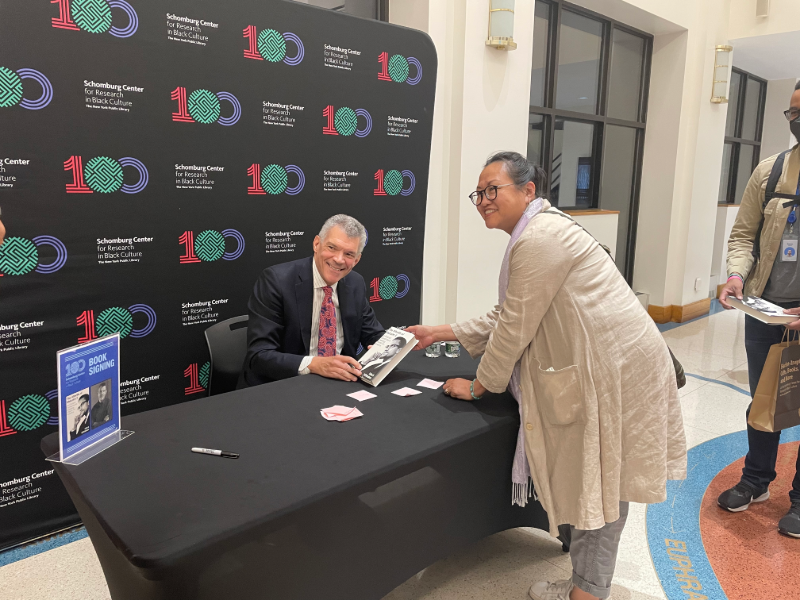

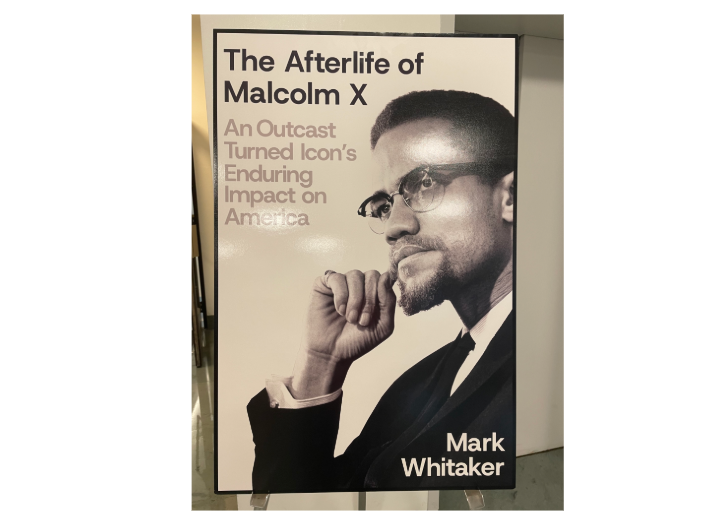
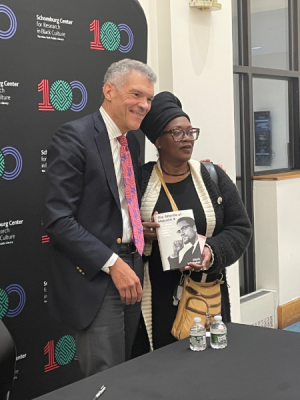






Add Comment
You must be logged in to post a comment.